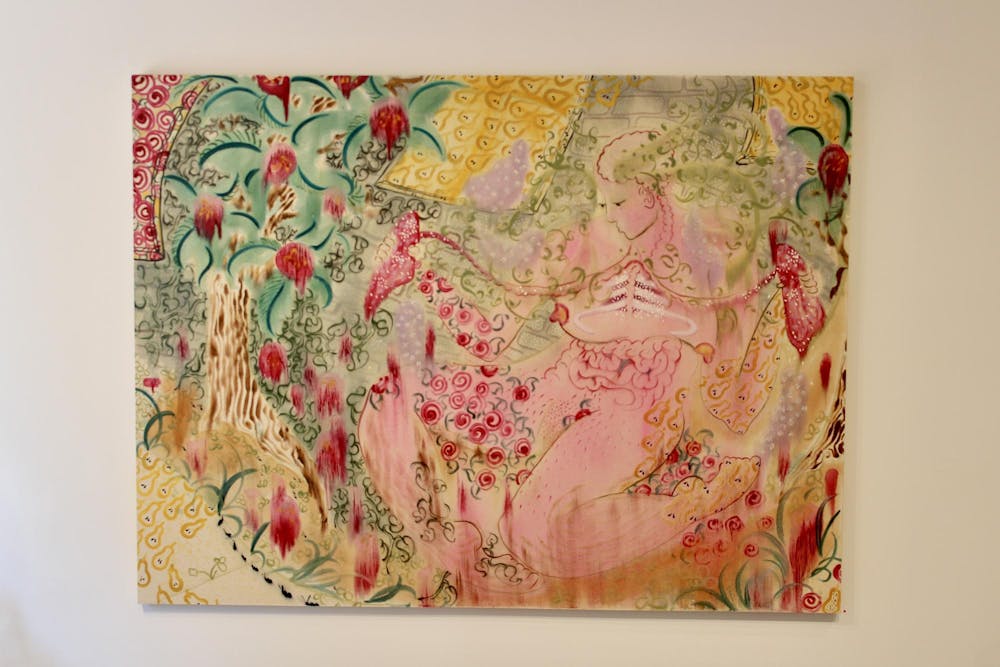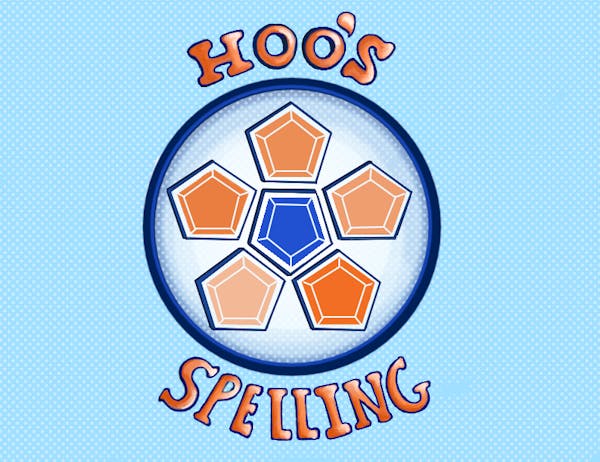Chloe Clayborne, Class of 2025 alumna, is an interdisciplinary artist who focuses on the transcendent, using her art to question what a human soul is and how it relates to the world. Her current exhibit “Decadent Dissolution” at New City Arts in the Downtown Mall explores these themes through sculpture, as well as oil and watercolor paintings.
This exhibit runs from Nov. 7 to Nov. 22, and is the culmination of Clayborne’s recent work which works to make sense of the unexplainable. When she was young, she and her family converted to Catholicism, causing her to question the truths that are told through faith.
“[I have] memories of asking those questions to [Catholic] priests, and not having answers,” Clayborne said. “I sort of use [my] art as an approach to have some sort of exposure to these questions or these fears to digest them and be able to contend with them on a daily basis.”
“Decadent Dissolution” consists of eight oil paintings and nine smaller water colors, along with nine hand-sculpted pots and an anatomical figure. Through the use of mixed media, Claybourne shows her process of questioning the metaphysical and trying to find answers about the soul and the afterlife.
The use of anatomical images in both the foreground and background of many of her paintings, along with a sculpture of a heart, convey the focus that Clayborne has on the body. The body becomes one with natural elements, showing how similar and connected humans are to nature.
Every November, New City Arts hosts a Studio Art fourth-year student or an Aunspaugh Fellow — a fellowship which allows a Bachelor of Arts in Studio Art student to complete a fifth year at the University, with the goal being to develop an artistic portfolio. They invited Clayborne, a current Aunspaugh Fellow, to create the exhibit in August, and she had about two months to prepare for the November exhibit. She said that her involvement in creating art and setting up the space for her exhibit was an exciting and new experience.
“It's been really fun trying to curate and make my own show,” Clayborne said. “Not many people get an opportunity to do that at 22 years old.”
Clayborne’s largest work spanning 60 by 84 inches and taking up an entire wall at New City Arts, is an oil on canvas titled “fallen unto an autumn breeze (which blows through tiring trees, tickling away yesteryear’s leaves).” A woman is the focal point of the piece whose hair and body look like a tree with brown roots digging into the ground. Surrounding the woman are repetitions of flowers, acorns and birds, with the woman becoming part of the landscape.
The interconnectedness of the human body to the environment is shown through the utilization of anatomical body parts, with trees that look like veins in the background, parts of a skeleton within the woman’s torso and a realistic heart painted at the bottom. Through the use of bodies, Clayborne represents the body as a vessel, one that functions with or without our minds telling it to.
“I was thinking a lot about the body as this membrane or a vessel that is a lot more interconnected to other things than we think,” Clayborne said. “[I thought about] how the body can become an archive and how the body holds memory.”
Audiences of the exhibit enjoyed Clayborne’s work, commenting on the beauty and artistic style of the works. MaKshya Tolbert, class of 2024 alum and artist, said this work reminded them of mermaids or nymphs from mythology. The exhibit showcased a lot of pink and green hues throughout the works, which Tolbert said made them enjoy the seasonality of the collection. They thought Clayborne’s imagination and artistic talent shone through and created a sense of deep personal thought.
“It just makes me think about a personal mythology, a personal environment like this could be what someone's inner life looks like,” Tolbert said.
Many of the smaller paintings tied together through placement, with the smaller water colors all hanging on a fence and similar-looking oil paintings hanging on the same wall. Within a collection of three oil paintings are black painted beetles and other bugs inside what looks to be shaped as human organs. They create a connection to the human figures in the larger works and blend the environment with the body, removing the separation between foreground and background.
Tolbert said that they enjoyed the comparison between the woman’s body and the beetles that is created by the smaller and larger paintings.
“[I like] the beetle body and the woman's body,” Tolbert said. “I'm drawn to the intimacy between the beings that are in the photos, and they're all imbued with environment without any of the borders or the management or the boundaries.”
Painting and pottery were combined in this collection, with the pots interspersed throughout the space — on chairs and the ground — while the paintings hung on the wall, allowing audiences to admire and draw connections between both artforms. The pots are used to contrast the bodies depicted in the paintings, as another form of vessel. Clayborne uses these pots, filled with plants, to show another way that vessels can contain life, with the plants growing and surviving relying on outside forces, similarly to the way humans must do.
“I really like the idea of the tradition of using ceramic, like clay, to make vessels,” Clayborne said. “And comparing the vessel to a body. And using the vessel in particular … as a way to compare and think through how the body is porous and how the body [contains] things that we don't see in there.”
Her pots are made through repetition of movements of Clayborne’s thumb digging into the wet clay to make the dug-out pattern. She said the repetitive movements mirror the continuity of constantly thinking and questioning, which is what she hopes to communicate through her art.
“The process of making is also really important when I'm talking about my work, because that the process of continuously doing something over and over again … mirrors the continuity of constantly thinking about and existentially questioning things on a daily basis,” Clayborne said.
Clayborne hopes that in the future, she can make her work express darker themes of questioning and attempting to search for the unknowable — stemming from her transition into Catholicism during her youth. She realizes her current art style is too conventionally beautiful and worries people may not initially understand her work, saying that often people only see the deeper meanings after she explains and discusses it.
“I don't try to make pretty work, but I end up doing it,” Clayborne said. “[I want to figure out] how do I create more work that might initially elicit different reactions … [such as] gross, uncomfortable, claustrophobic. I don't know, a lot of these feelings that I'm feeling through doing the work myself — that doesn’t always get carried across.”
However, Tolbert said that this exhibition made them step a little outside of what is conventional.
“It does make me feel just ever so slightly like outside of what would be comfortable,” Tolbert said.
Clayborne’s paintings and sculptures are available for purchase at the exhibit, which runs from Nov. 7 to Nov. 22 at New City Arts.







